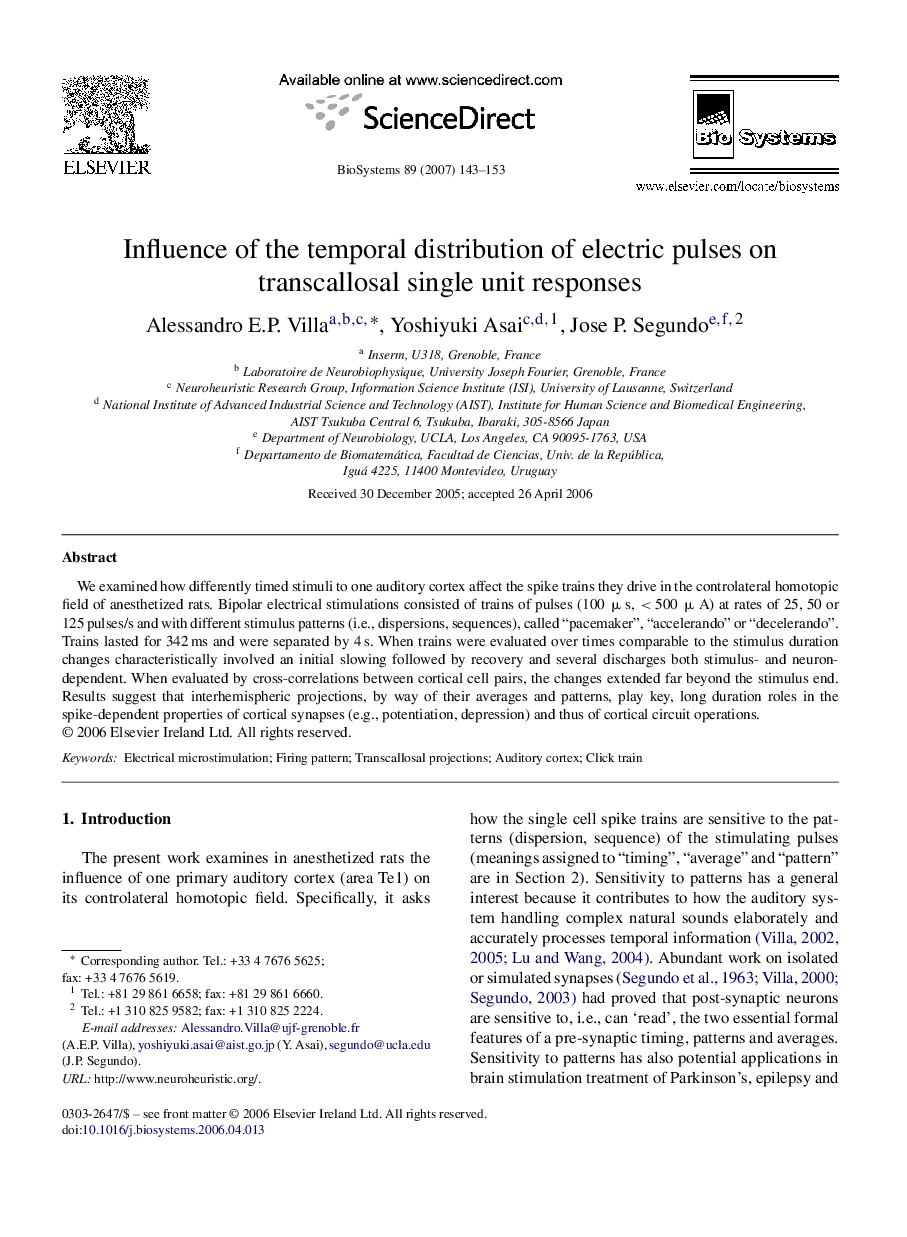| Article ID | Journal | Published Year | Pages | File Type |
|---|---|---|---|---|
| 2077151 | Biosystems | 2007 | 11 Pages |
We examined how differently timed stimuli to one auditory cortex affect the spike trains they drive in the controlateral homotopic field of anesthetized rats. Bipolar electrical stimulations consisted of trains of pulses (100μs, <500μA) at rates of 25, 50 or 125 pulses/s and with different stimulus patterns (i.e., dispersions, sequences), called “pacemaker”, “accelerando” or “decelerando”. Trains lasted for 342 ms and were separated by 4 s. When trains were evaluated over times comparable to the stimulus duration changes characteristically involved an initial slowing followed by recovery and several discharges both stimulus- and neuron-dependent. When evaluated by cross-correlations between cortical cell pairs, the changes extended far beyond the stimulus end. Results suggest that interhemispheric projections, by way of their averages and patterns, play key, long duration roles in the spike-dependent properties of cortical synapses (e.g., potentiation, depression) and thus of cortical circuit operations.
